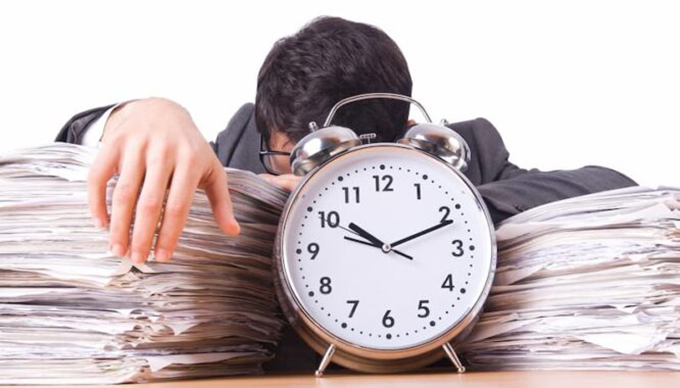
Lots of we scholarly peeps struggle to find time to write. Time is on pretty well everyone’s list.
So we keep looking for better ways to manage our time so we can get more time to write. My proprietary university software seems to want to help – it now issues a weekly bulletin, whether I want it or not, telling me how much time I’ve spend “collaborating” compared to the amount of time I’ve spent on screen. The stats are pretty misleading given that collaboration seems to include any email I’ve sent – this is an algorithmic joke right – very few emails are actually collaboration. Interaction maybe.
Of course, there are apps which do help keep track of time. I’ve tried a lot of them and none of them work for me. They seem to require time and energy that I’m not really prepared to donate to time-tracking. I did once keep a diary for a week of everything I did which, in the end, didn’t really tell me anything I didn’t know.
While a lot of people like time-tracking devices and find them helpful, I’m not one of them. So please don’t tell me your favourite fail-safe time-tracking device, because I’m really not going to go there.
I’m much more your calendar/diary blocking type. Blocking out all of the meetings, teaching, research visits etc so you can see what’s left. And then I apply the old ABC rule. You’ve probably heard the ABC rule but it bears repeating for those who haven’t.
A writing time is when you are at your focused and insightful best – it’s thinking writing, working out arguments, structuring, putting bits and pieces together, composing your tiny text, knocking out a first draft, doing some serious revising, it’s challenging reading. I put peer reviewing and examining PhDS as A time. Preparing research bids and developing teaching courses requires A time too.
B writing time is when you are able to get things done, but the task is not too challenging. You can concentrate but you don’t expect to have to do anything particularly creative or taxing. I put proofreading, entering references into Endnote, searching for literatures, basic summarising and note-taking, reading reports and straightforward texts as B time. Some teaching preparation can go in here as does a lot of marking. You still have to be alert and thinking in B time but the tasks are less demanding of high energy and creative engagement.
C writing time is associated necessary writing. Mundane stuff. Switch off most do the brain stuff. So it’s generally most of the admin and emailing. Interacting emails. Real collaboration via email is probably B time.
Because we can get trapped in C time, as we respond like well-trained rats on a treadmill to the latest urgent request, we often have to take deliberate action to make sure that we have A time.
But here’s the thing about A time. You have to know when you are likely to be at your best, or when you can summon up something approximating nearly your best. I have no children at home, so I’m a morning A time person. But I know people who are afternoon people, and I know a lot of night people. A lot But whether A time is morning afternoon or nighttime is also always about what’s possible. People with children often do their A time after everyone else, including their partner, has gone to bed. A few can get A time while children are at school, but many carers also rely on squeezing out a few times a year when they can get more consecutive day time to work in A mode. And people who work in most jobs, including we academics, also have to work hard on finding A time.
The key thing really is to make sure that you programme in some regular A and B time so that you can keep connected with your major project and writing thinking. If you can only get A time in blocks a few times a year, then doing weekly B time is generally enough to keep your project on track.
I also now add in a D time to my week. D time is time which appears to be devoted to doing something other than writing or research or teaching or admin, but is actually also time when something might just come to you. Lots of people use D time for exercise. And some also use D time for making. I’m one of the makers. I know I have to balance out my A thinking writing time with high quality D making time. I also block out D time in my diary.
Now I am sure the ABCD approach won’t work for everyone. It doesn’t work for everyone. Any more than those time tracking aps work for me. But it might be of help to some of you. And for those you who want to try ABCD, the thing is to make sure that you block out your ABC and D time, and then stick to these slots for a while to get into the habit of working this pattern.
